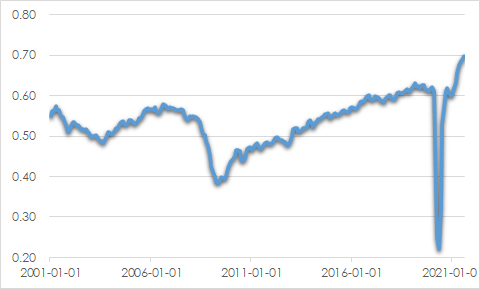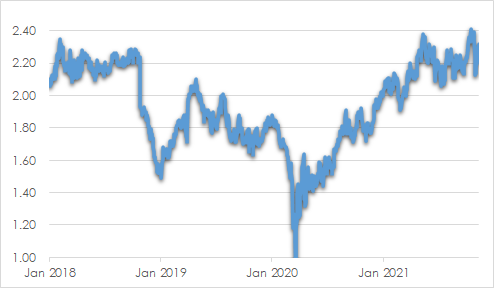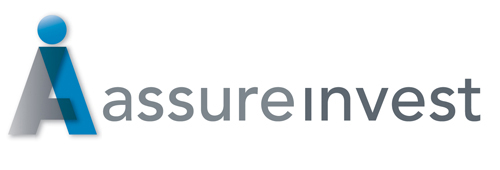Fundamentals are strong given rebounded output with business and consumer balance sheets in good shape. Vaccines, rapid testing, quarantine procedures and mask wearing have made it possible to live alongside the virus.
The strongest period in the rebound is now fading, but monetary policy remains loose and there are more legs to this recovery yet.
However, investors must recognise that the economic environment is changing. The surge in technological disruption during the pandemic is supporting a strong rise in productivity while creating jobs in new areas and destroying others. Individual preferences have shifted including the favouring of work from home and reluctance to travel and attend large gatherings.
The sharp rise in public and private debt is likely to suppress the quantum of future interest rate rises but will also increase the vulnerability to external shocks. Rising US/China tensions appear endemic.
Consumption will be supported by high savings rates, strong demand for workers, rising wages, lifted property and equity prices and buoyant sentiment as the health situation continues to improve. The surge in fiscal spending is past its peak but remains supportive as exampled by new US infrastructure spending plans over the next decade.
Inflation pressures to ease soon before rising more sustainably
Inflation pressures may well reduce over the next year or so as some of the supply bottlenecks ease as Covid-19 complications settle, transportation and storage capacity catches up with demand and individuals rejoin the workforce. However, higher prices over the medium term are becoming more likely, not at the rapid pace seen in the 1970s because labour markets are now less unionised and more casualised, but more likely above the middle of central bank target zones.
To this point, inflation pressures have been more prevalent in the US than in many other countries as strong demand meets insufficient supply. Quit rates in the US have risen strongly as workers seek better jobs, higher pay, greater flexibility to home-school children or improved lifestyles. Lower participation rates especially amongst older workers reflect early retirements and concerns of the Covid-19 health risks associated with their job.
Reflecting the power shift toward workers in the US, many more people are choosing to leave their jobs than at any time since 2001. Some 70% of separations are because the employee quit, the average is 53%.
CHART 1: US QUITS/SEPARATIONS

Source: St Louis Fed
Workers’ strikes for a better deal are beginning to become more frequent and may be increasing in an attempt to offset the jump in energy costs during the northern winter. The challenge for US employers in filling positions is seen in the two million more job openings than individuals seeking work.
Companies feel able to pass on cost increases through higher product prices given elevated consumer savings and sentiment. Central banks waiting for further clarity that pandemic troubles are in the past before reducing stimulus will encourage further demand expansion while supply struggles to catch up.
Inflation expectations have risen to the highest level since the data series started five years ago but remain only mildly above central bank target levels indicating markets believe longer term pricing pressures are relatively well contained for now.
CHART 2: US FIVE YEAR FORWARD INFLATION ESTIMATE

Source: St Louis Fed
Monetary policy stimulatory for longer
Central banks may tighten conditions more slowly and by a lesser degree even if inflation does show signs it will continue to lift. In recent years, the policy focus has switched to supporting employment rather than dampening inflation. The US Federal Reserve is targeting “average” inflation which will allow it to observe inflation above the 2% target for a period to make up for the time that it was below that level.
The European Central Bank (ECB) has moved to “symmetric” targeting of 2% inflation over the medium term from a goal of “close to but below 2%”. This probably gives it more flexibility to maintain accommodative policy even as inflation heads toward 2%. It also means the ECB may not move immediately to tighten once inflation eventually exceeds the target level. Japanese inflation has been below target for decades and the central bank will be disinclined to quickly snuff out any recovery once any signs emerge.
While most developed economy central banks have started to taper asset purchases or will do so soon, rate rises are generally not imminent. Time may evidence the belated need to tighten policy more rapidly thus triggering recession.
Investment strategy
The environment remains favourable for growth over defensive assets. However greater caution is warranted as the cycle matures. Rising earnings and the promise of low interest rates for a while yet should allow share prices to rise further. Slowing growth, rising bond yields and stretched valuations in some areas should subdue potential gains. The next six months could be helped by excitement around reopening from shutdowns, but gains from that point are likely to be harder won.
In the past quarter we brought our overweight to growth assets back towards balance by reducing property and international small cap exposures. We increased cash levels to provide greater flexibility in managing the range of uncertainties facing investors.
Inflation concerns have probably overshot in the very near term so evidence of improving supply chain efficiency should allow bonds and growth equities to rally. However rising capacity utilisation should fuel more enduring inflation increases in time, thus justifying our strong preference for companies with proven pricing power and our shorter duration and overweight to high quality credit in fixed interest portfolios.
We are neutral weight the equities asset class overall but slightly underweight the US which is the most stretched despite being blessed with some of the most outstanding businesses of all time. We remain overweight Japan where the market is undervaluing economic acceleration that should be faster than most over the next year. We hold small explicit weights to Australian resources companies that should help support portfolio returns if inflation surprises further on the upside or investors gain greater appreciation of the growing demand for metals like copper and aluminium to help electrify the economy.
Andrew Doherty. AssureInvest
The Information constitutes only general advice to wholesale investors. In preparing this document, AssureInvest did not take into account your particular goals and objectives, anticipated resources, current situation or attitudes. Before making any investment decisions you should review the product disclosure statement of the relevant product and consult a securities adviser. Past performance is no guarantee of future performance. This document is not intended for publication outside of Australia.

FREE Special Report: How to Jump ahead of competitors and add more value for clients
Learn how you can boost profits while enhancing customer outcomes.



